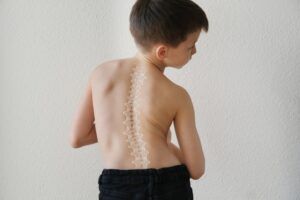For many people, back pain disrupts daily life and limits their ability to stay active, often because they aren’t sure how to manage or treat it. Physical therapy (PT) offers a natural, non-invasive approach to addressing spine health issues, providing lasting relief and empowering individuals to take control of their wellness. In this article, we’ll explore the benefits of physical therapy for spine health, the signs it’s time to seek treatment, and how PT can enhance long-term well-being.
Why Physical Therapy Is Essential for Spine Health
Physical therapy is a foundational tool for maintaining a healthy spine and effectively managing back pain. Unlike medication, which often provides only temporary relief, physical therapy works by targeting the root cause of pain, whether it’s muscle weakness, poor posture, or improper movement patterns. By treating the underlying issue, PT helps prevent future problems and supports the spine’s health for the long term.
Here’s how physical therapy directly benefits spine health:
- Pain Management and Relief: PT techniques, such as manual therapy and therapeutic exercises, reduce pain without the need for drugs or surgery.
- Improved Flexibility and Range of Motion: Physical therapists focus on increasing flexibility and restoring range of motion, which can be limited due to injury or stiffness.
- Strengthened Core Muscles: A strong core provides essential support for the spine, alleviating pressure on the back and reducing strain on the vertebrae and discs.
- Injury Prevention: Physical therapists teach patients proper movement mechanics and posture, significantly reducing the risk of future injuries and recurring pain.
When to Consider Physical Therapy for Spine Health
Determining when to seek physical therapy for spine health can depend on a variety of factors, but certain situations often call for professional intervention:
- Persistent or Chronic Back Pain:
- If you experience back pain lasting more than two weeks, physical therapy may be an ideal option. Chronic back pain can indicate underlying issues, such as muscle imbalance or joint dysfunction, which PT can address.
- After a Spine Injury:
- If you’ve sustained an injury affecting your spine, early intervention with physical therapy can prevent long-term damage. A therapist will help restore function, reduce inflammation, and rebuild strength in a controlled, safe environment.
- Recovery Following Spine Surgery:
- Post-surgery physical therapy helps patients rebuild strength, flexibility, and function, minimizing the risk of complications. A therapist can guide you through a customized recovery plan to ensure proper healing.
- Symptoms of Nerve Compression:
- Conditions like sciatica or herniated discs that compress nerves often benefit from physical therapy. Targeted exercises and stretching techniques can relieve pressure on nerves and reduce symptoms like tingling, numbness, or pain radiating down the legs.
- Limited Mobility or Flexibility:
- Stiffness, reduced flexibility, or difficulty performing daily activities may indicate that the spine or surrounding muscles are tight or weak. Physical therapy can help improve your range of motion, making everyday movements easier and more comfortable.
Key Techniques in Physical Therapy for Spine Health
Physical therapists use a range of techniques to treat back pain and enhance spine health. At Spine, Neck, & Back Specialists, Dr. Jay Reidler and his team focus on tailored, evidence-based approaches for effective, personalized care:
- Manual Therapy: Hands-on techniques like joint mobilization and myofascial release relieve muscle tension, increase blood flow, and reduce inflammation in targeted areas.
- Therapeutic Exercises: Customized exercises target weak or imbalanced muscles, improve core strength, and enhance stability, all of which are essential for supporting the spine.
- Posture and Body Mechanics Training: By teaching patients correct posture and movement techniques, physical therapists help prevent further spine strain and improve alignment.
- Stretching and Flexibility Training: Stretching exercises help improve flexibility in the spine and surrounding muscles, increasing range of motion and reducing stiffness.
- Heat and Cold Therapy: Heat relaxes tight muscles, while cold therapy reduces inflammation and pain, providing immediate symptom relief.
Long-Term Benefits of Physical Therapy for Spine Health
Physical therapy does more than alleviate symptoms; it provides patients with tools for long-term spine health. Here are some ways PT supports ongoing wellness:
- Reduces Dependency on Medications: By treating the underlying causes of pain, physical therapy can reduce or eliminate the need for pain medications.
- Promotes Functional Independence: Physical therapists empower patients with exercises and techniques that allow them to manage their own spine health, enhancing their independence.
- Improves Quality of Life: Patients often experience greater ease and enjoyment in daily activities due to increased mobility, strength, and pain reduction.
Tips for Making the Most Out of Physical Therapy
Consistency and active participation are essential to reaping the full benefits of physical therapy. Here are some tips to maximize your progress:
- Follow Your Exercise Plan: Completing assigned exercises at home is crucial for building strength and flexibility.
- Practice Good Posture Daily: Implement the posture techniques taught by your therapist in your everyday routine to keep your spine aligned and reduce strain.
- Communicate with Your Therapist: Let your therapist know if you’re experiencing discomfort, pain, or any issues so they can adjust your treatment plan as needed.
When to Seek Physical Therapy for Chronic Spine Conditions
If you suffer from conditions like degenerative disc disease, arthritis, or scoliosis, physical therapy can be especially beneficial. These chronic conditions often cause ongoing pain and stiffness, which PT can help manage by reducing muscle tension and promoting proper alignment. Physical therapy also helps prevent the progression of certain degenerative conditions by strengthening the spine and maintaining joint function.
Choosing Physical Therapy with Dr. Jay Reidler
For residents in Bloomfield, Englewood, and Union City, NJ, Spine, Neck, & Back Specialists, led by Dr. Jay Reidler, provides a comprehensive approach to spine health. By working with an experienced physical therapist, patients can create an individualized care plan focused on their unique spine health needs.
Physical therapy is a proven path to long-term relief and spine health, offering an empowering approach to back pain management. If you’re experiencing discomfort, stiffness, or have recently suffered a spine injury, contact Dr. Jay Reidler at Spine, Neck, & Back Specialists to explore your options. Now accepting CIGNA PPO and many other insurance plans—reach out to learn more and start your journey to a healthier spine.
Sources:
- American Physical Therapy Association (2023). Understanding the Benefits of Physical Therapy for Spine Health.
- National Institutes of Health (2023). Physical Therapy Techniques for Back Pain Relief.
- Mayo Clinic (2023). Why Physical Therapy Is Effective for Spine Health.




